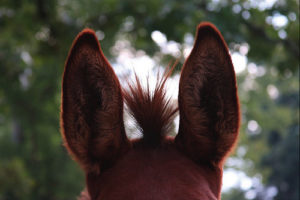Playing by ear is indistinguishable from ear training….they are mirror images of each other….with memorization stuck somewhere in between. Here are a few tips to help you dive right into playing by ear.
-
1) Most important for playing by ear is EAR TRAINING
Without ear training, all the other steps that follow will be much harder. (see other post). Interestingly, playing by ear IS a form of ear training, so you can choose to try to learn tunes by ear or you can choose to work on formal ear training…..they BOTH compliment each other. Just TRY!

2) Be able to sing the tune you are trying to learn (within reason)
If you can sing it, you can teach your fingers to play it.
3) Find the lowest and highest notes of the tune
This gives you a range, and limits your possibilities.
4) Define the general structure of the tune.
Does it have parts that repeat? Sketch this out. If could be Verse 1, Verse 2, chorus, Verse 3 Bridge. Or you might just call it A1, A2, B, A3, C. It doesn’t matter how you label it. It is YOUR map of the tune.
4) Describe the “shape” of each section
Does it go in small, scalar steps, or is it full of jumps and skips? Does it climb high and then dip low, or does it stay fairly level? Melodies that skip, jump, and have a wide range of pitches are more advanced to play by ear, so you can expect those to be a little harder. No big deal! Just brace for it, and move forward!
5) Find a “toe-hold” for each section
Something memorable, something that grabs your ear. Singing the tune will help you find these little toe-holds.
6) Pizzicato
I find it easier to woodshed my way through a tune by plucking the notes instead of bowing them.
7) Find your first and last note of each section
If you are playing from a recording, then you must MATCH your first note to the recording. If you are playing a tune from your memory, then you can start on ANY note….but if you start going into crazy finger patterns, i.e. lots of flats or sharps, try starting on a different starting note. To do this, choose a nice normal note, and then SING to help transpose the melody into your new key. See if that works better. If it doesn’t, try ANOTHER different starting note.
Give any of these tips a try! Most important of all: do not be afraid to try, and do not be afraid to make a zillion mistakes! It’s all part of the process! Sing, pluck, and have fun!
